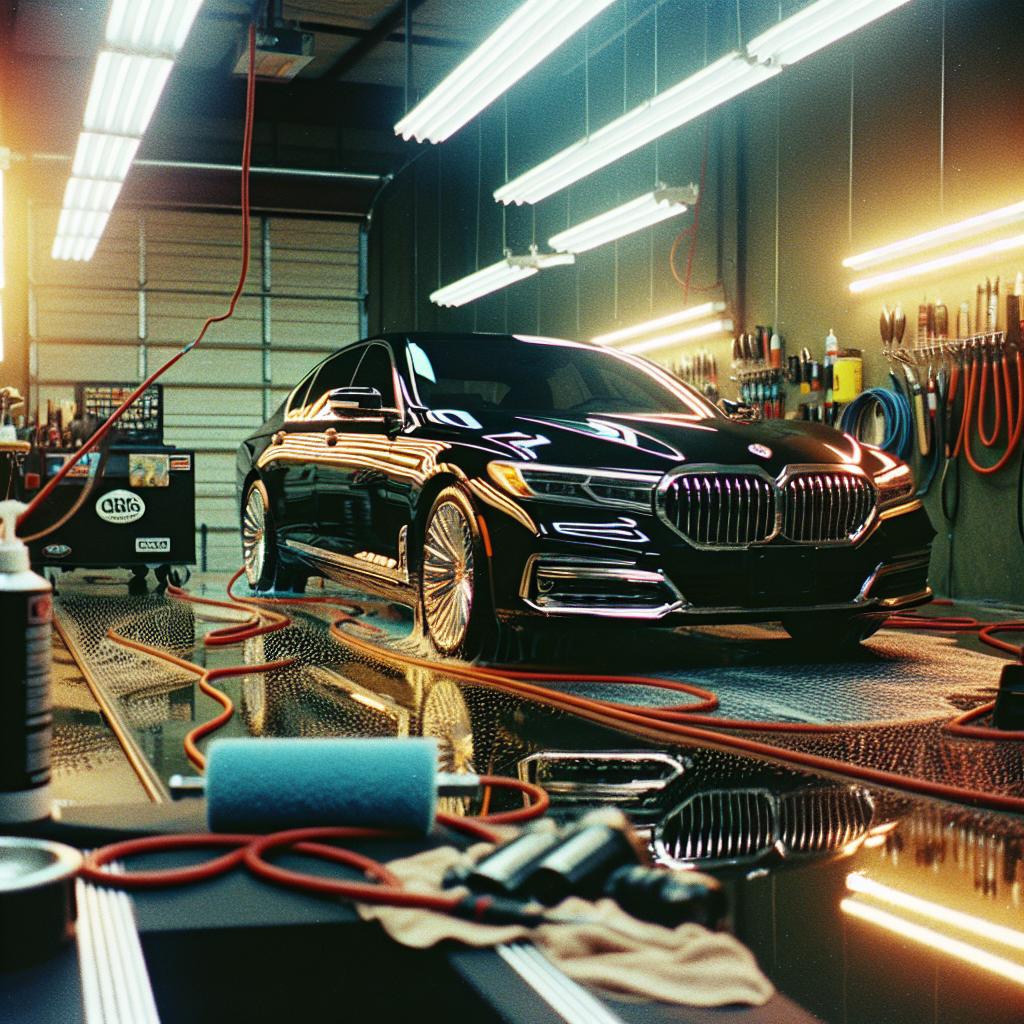Exterior Wash and Dry
Choosing the Right Soap
When it comes to washing your car, picking the right soap makes a world of difference. Not all soaps are created equal! Personally, I always go for a pH-balanced soap to avoid stripping any wax. Trust me, you don’t want to make that mistake.
Before diving in, have a look around for a soap that is biodegradable and won’t harm the environment. It’s a small step that goes a long way. Plus, it feels good to know you’re doing your bit while keeping your ride shiny!
Once you’ve got your soap, make sure to mix it well following the instructions. A sudsy mix not only helps in lifting dirt but also gives your car that showroom shine!
Techniques for Washing
Ah, techniques! The art of washing your car properly should never be underestimated. I swear by the two-bucket method – one for soapy water and the other for rinsing. It helps avoid swirling your paint with dirt. Fancy, huh?
Don’t forget to start from the top and work your way down. Gravity is a friend here! And always use a microfiber wash mitt; it’s gentle on paint and really picks up grime. A good scrub while washing can keep paint scratches at bay.
Rinse thoroughly and dry using a soft towel. This prevents water spots and hey, it’s easier to admire your work on a clean, dry surface. You’ll want to take a step back and bask in your accomplishment!
Protective Waxing
After a good wash, our cars deserve protection, right? That’s where waxing comes in. Personally, I recommend doing this every few months, or more often if you’re driving a lot. It’s like sunscreen for your car!
Applying wax is fairly easy; just use an applicator pad and work in small sections. Buff it out once it’s dried, and voila! You’ve not only added shine but also created a protective layer against the elements.
Be sure to choose the right type of wax for your car—paste, liquid, or spray. Each has its benefits, but I love the results from a good paste wax. It just feels more classic, you know?
Interior Detailing
Vacuuming
Let’s dive inside the car because, honestly, it’s where the magic happens. Vacuuming is your first step to an immaculate interior. I often like to start from the back and work my way to the front, making sure I suck up every crumb and debris.
Use different nozzles for tight spots – trust me, those tiny crevices can be a nightmare without the right tool. I find the details make all the difference. A clean interior feels not just good but smells fresh too!
Also, shake out the mats for a quick clean-up before vacuuming them. It’s amazing what a little effort can do in lifting dirt and reaching those pesky corners.
Cleaning Surfaces
Once you’ve got the vacuuming done, it’s time to tackle surfaces. This is an important step that can easily be overlooked! I grab a microfiber cloth and a quality interior cleaner, and get to work on the dashboard, console, and door panels.
Be gentle when you’re wiping; different materials might need different treatments. I’ve found that a mild soapy mix works wonders for most surfaces, bringing them back to life without harsh chemicals.
Don’t forget the windows! A good glass cleaner will make your windows streak-free and clear, allowing you to see the road ahead clearly—no more eye strain!
Odor Elimination
As someone who’s dealt with various odors from my car, let me tell you, there’s nothing worse! You can freshen up your ride by using air fresheners or activated charcoal bags. They work wonders, believe me!
I also recommend checking for any hidden trash that might be contributing to the smell. It’s surprising what can get lost underneath the seats! And trust me, cleaning it up can do away with the nostalgic smell of takeout.
For a long-term solution, consider using a steam cleaner. It’s eco-friendly and can do wonders for getting rid of deep-seated odors. Your buddies will definitely thank you later!
Engine Bay Cleaning
Safety Precautions
Cleaning the engine bay can seem like a daunting task, but it’s actually straightforward with the right safety precautions. I always ensure the engine is cool before starting. Nobody wants a sneeze-worthy steam burn, am I right?
Also, make sure to disconnect the battery. Believe me, you’ll want to avoid any accidents with wires and fluids while you’re in there. Keeping it safe means keeping the detail level up!
Lastly, cover sensitive parts like exposed filters and electronics with plastic. The last thing you want is for water to mess with your engine’s circuits. Just a little foresight can save you some headaches down the line.
Cleaning Techniques
Now for the fun part: getting in there and giving it a good clean! I like to use a degreaser and a soft brush. You’d be surprised at how much dirt collects in the engine bay over time. It’s important to scrub without being too aggressive—be gentle!
After scrubbing, rinse with a low-pressure hose. You’ll want to avoid a heavy stream, which can shoot water into places where it shouldn’t be. The goal is to get it clean without causing a mess—or more work for yourself!
Once it’s clean, a quick dry-off with a cloth will prevent any rust from forming. And there you go! A clean engine bay is not just aesthetic but can help your engine run more efficiently too.
Final Touches
The final touches make all the difference in your detailing job. Spraying a protective dressing on rubber and plastic can keep them from fading and cracking. I use a simple spray that doesn’t leave a greasy residue, so it looks brand new without the ‘sticky’ feel.
Don’t forget to take a moment to step back and admire your work. There’s something incredibly satisfying about a well-detailed engine bay. It doesn’t just look good; it helps you keep an eye on potential maintenance issues.
Lastly, always remember to close everything up securely and reconnect your battery. Your hard work deserves the acknowledgment of a roaring start when you fire up that cleaned-up engine!
Headlight Restoration
Identifying Cloudy Headlights
First off, let’s talk about headlights. If they’re fogged up, it’s not just an aesthetic issue; it can become a safety hazard. I’ve had my fair share of experiences driving with dim lights, and trust me, it’s unsettling!
Sun exposure and oxidation can cloud your headlights over time. If you notice them becoming less clear, that’s your cue to act! You can check this by simply seeing how much light is coming through, which leads us to restoration solutions.
Before jumping to solutions, examining the degree of haziness gives you a better idea of what method to use. Some might need a simple polish, while others may require a bit more elbow grease!
Restoration Techniques
There are several ways to restore headlights, but I’ve found that a DIY method with a polishing compound works like magic. Simply use a clean cloth and apply the compound, working it into the headlights in a circular motion. It’s almost therapeutic!
Another effective method is using baking soda mixed with water to create a paste. Apply it, let it sit for a while, then scrub. I couldn’t believe how well this worked on my old ride!
After restoration, always finish off with a UV sealant spray which helps to protect your hard work from re-oxidation. It’s one small protective layer for man, one giant leap for clarity.
Maintenance Tips
Once you’ve taken care of those headlights, it’s all about maintenance! Consider using a headlight protectant spray every few months to keep them clear and shining bright, and add it to your detailing routine. It makes a difference.
Additionally, regular washing can help prevent precipitation of dirt and grime on your headlights. I like to add them to my routine after washing the car, so I don’t forget. Out of sight, out of mind, you know?
Lastly, don’t be afraid to inspect them every now and then. Keeping an eye out for any new cloudiness can save you time later—you want those lights clear and safe!
Final Detailing Touches
Interior Refresh
Now, we’re nearing the end of our detailing adventure! It’s time to add those final touches to your car’s interior. A quick wipe down of any nooks or crannies you missed can send your cleaning efforts over the top. I like to use a trusty cloth and some multi-surface cleaner for that extra shine.
Don’t forget to replace any forgotten items back into their places as you finish up. This keeps the space organized and tidy. Plus, your car will feel more inviting right off the bat when you hop back in.
Lastly, adding an air freshener can provide a delightful ambiance that keeps you motivated to keep your car clean. A little spritz goes a long way!
Final Inspection
Okay, the time has come for the ultimate reveal: the final inspection! I always step back and give my vehicle a once-over to catch any areas I might have missed. This is key for ensuring all areas are as pristine as possible. It’s like the grand finale at a show!
During inspection, check for any leftover dirt or smudges, especially on the windows and mirrors. A couple of touch-ups here and there can elevate your hard work. It’s like polishing a gemstone—every little detail counts!
Furthermore, I make it a habit to drive with the windows down right after detailing. The fresh air gives a double-win for freshness inside the car. Plus, it’s a wicked way to celebrate your complete detailing job!
Regular Maintenance Routine
Last but not least, developing a regular maintenance routine post-detailing will save you time and effort in the long run. I’m talking about scheduling regular washes and interior cleans. It’s like building a relationship with your car!
Stick a reminder on your phone; a monthly check-up can do wonders. Establishing this routine means you knock out most of the heavy lifting before it even piles up! Less dirt equates to more shine.
And enjoy the experience—you’ll find that cleaning your car can be therapeutic. Crank up your favorite tunes and turn your detailing sessions into a mini-event of their own!
FAQs
1. How often should I detail my car?
It depends on your lifestyle, but a good rule of thumb is every 3 to 6 months. If you’re frequently outdoors or have kids, you might want to do it more often to keep things tidy!
2. Can I detail my car myself?
Absolutely! With the right products and a little elbow grease, you can achieve great results at home. Plus, it can be a fun project!
3. What products do I need for DIY detailing?
Some essentials include car soap, microfiber cloths, an interior cleaner, wax, and a good vacuum. You don’t need the fanciest stuff; just make sure they’re suitable for your car!
4. How long does detailing take?
This can vary based on your car’s condition and your thoroughness. Generally, you might spend anywhere from 2 to 4 hours for a good detail.
5. Is professional detailing worth it?
If you have the budget, professional detailing can save time and they often have access to specialized products. However, if you’re up for it, doing it yourself can be rewarding and just as effective!



